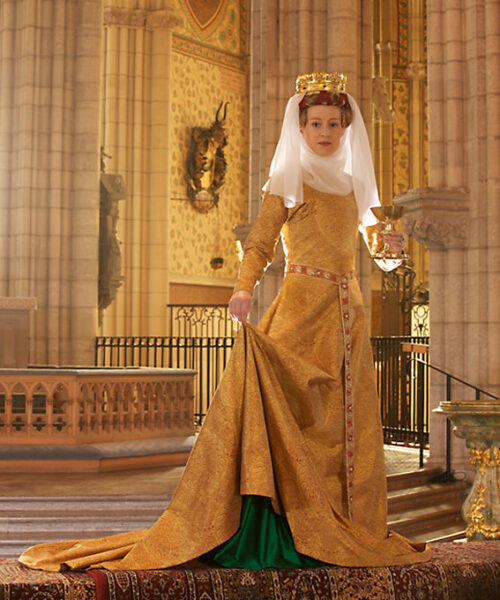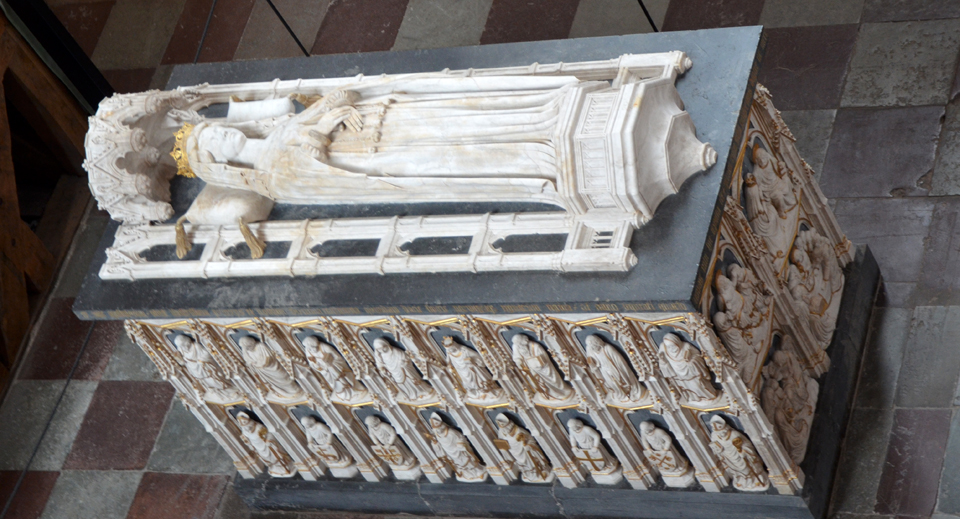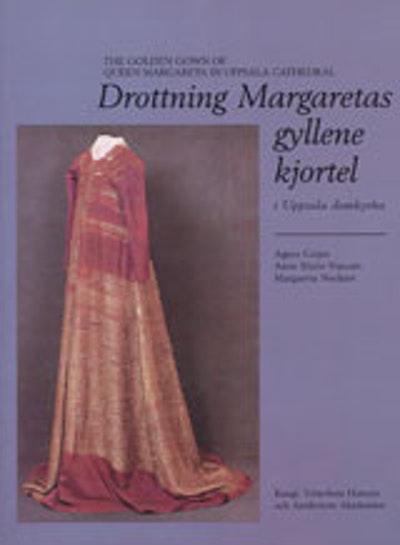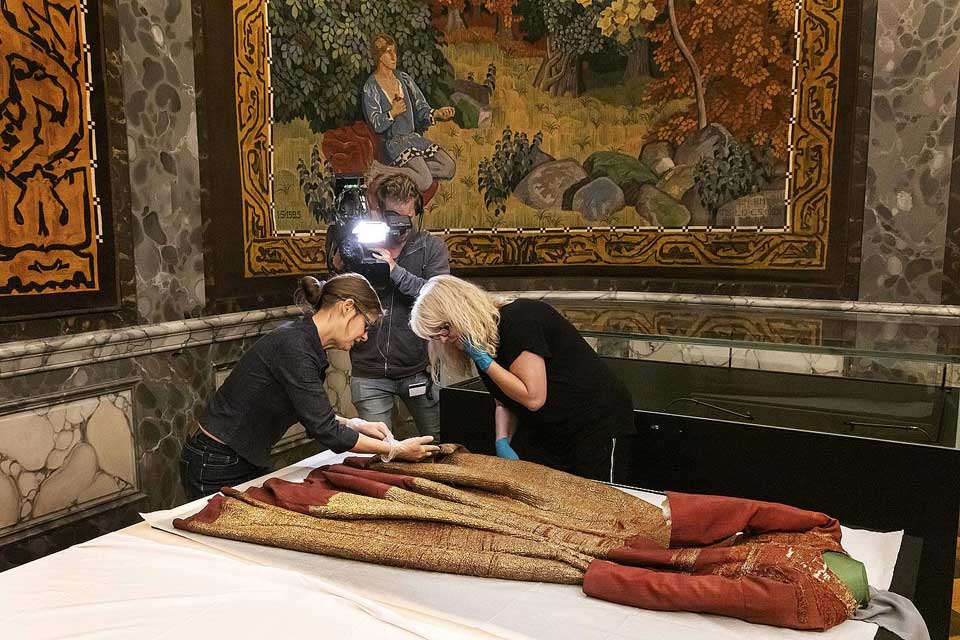Until 1659 the medieval dress of Queen Margaret I of Denmark and Norway was kept as a precious relic in the Cathedral in Roskilde. Today it is back for a splendid exhibition in Copenhagen at Christiansborg.

Not many dresses from the Middle Ages have been preserved. Arguably, the finest is the dress, which belonged to Queen Margaret I of Denmark and Norway (1333-1412).
Until 1659, the dress was kept in the treasury at the Cathedral in Roskilde. According to tradition, the dress worked miracles for women in childbirth. Occasionally, it may have been lent out to queens or nobles in dire labour and ferocious pain.
However, between 1658-60, the swedes waged war on Denmark to the bitter end, when the Swedish King and his army nearly conquered Copenhagen and the royal castle. Only and with a great effort, the Swedes were repelled, and Demark kept its independence. However, during those years, the Swedish army and its King looted numerous art and precious heirlooms, which were carted to Stockholm and Uppsala.
One of these artefacts was the precious and fabled dress, which up until now has been kept in the treasury at Uppsala.
The fabric of the dress, a golden brocade with a lotus pattern, was likely Italian in its origin. The gown would have used up approximately eleven metres of fabric with a loom width of ca. 60 cm. Such a fabric would have represented a small fortune. The prices listed from the 15th century were between 2.5 to 20 florentine florins per “braccio” (58.4 cm). Thus, the price would have been between 50-375 florins or the equivalent of 2,7 to 20,2 kg pure gold. To compare, a golden crown such as the one figuring in the 1399-list of Richard II, weighed less than one kg. The value of the dress would have exceeded that of the crown worn by the queen.
The weaving technique was called diasper, in modern parlance lampas. Consisting of two separate layers bound weft-faced and warp-faced, the pattern was formed by alternating the layers on the surface. The ground weave was a five-shaft warp satin, while the pattern-forming layer of the weave was shot through with gold. The gold thread was a gilded silver lamella spun around a silk thread. The gold weft was tied with a thin warp of yellow silk.
Traditionally, the dress was identified as the wedding gown of Margaret I to the Norwegian King, Hakon the 6th of Norway, in 1363. Careful studies of the garment, though, have shown that it is probably younger. The dress has been carbon-dated to c. 1400. If the dress did indeed belong to Queen Margaret, which seems likely granted the sumptuous fabric and its later history, she would have been a small woman with a slightly skewed shoulder.
Her tomb, which is preserved at Roskilde, has never been opened. Hence, the dress has not been fitted to the queen herself. Wear marks and mending does show, however, that a living person used the dress. Perhaps it was also used in connection with her funeral in 1412. In the later middle age, it was the custom to perform royal funeral processions with effigies of the deceased dressed in their own clothes and regalia.

SOURCE:
Press Release
VISIT:
For centuries, the legendary Danish Queen Margrethe I’s precious gold dress has been kept in Sweden. Now it has returned home to Denmark to the Queen’s Christiansborg. The unique dress will be the centrepiece of the castle’s exhibition about the powerful medieval queen from 24 September to 12 December 2021. The exhibition is mounted as part of the screening of the film: Dronning Margrete I
READ MORE:
 The Golden Gown of Queen Margareta in Uppsala Cathedral/Drottning Margaretas gyllene kjortel i Uppsala domkyrka
The Golden Gown of Queen Margareta in Uppsala Cathedral/Drottning Margaretas gyllene kjortel i Uppsala domkyrka
By Agnes Geijer, Anne Marie Franzén and Margareta Nockert
Kungl. Vitterhets Historie och Antikvitets Akademien, Stockholm 1994
ISBN 91-7402-249-0
